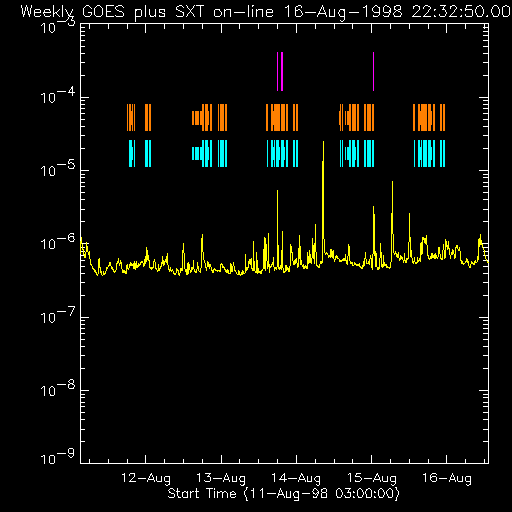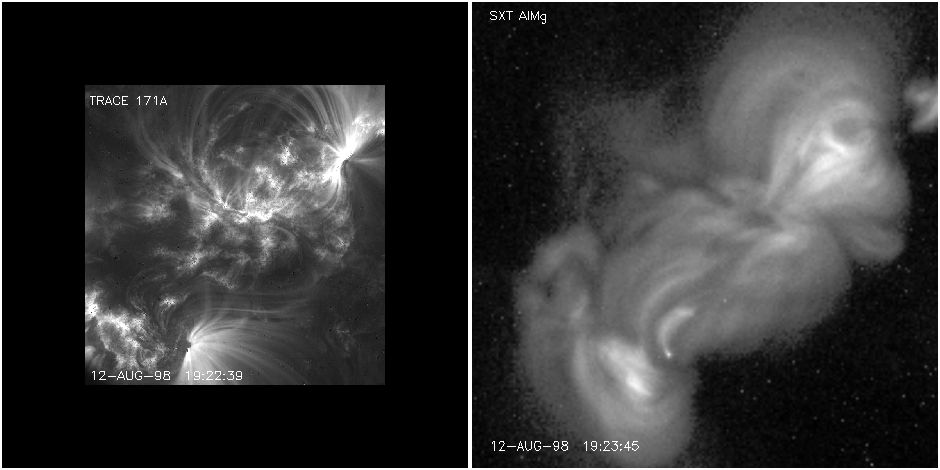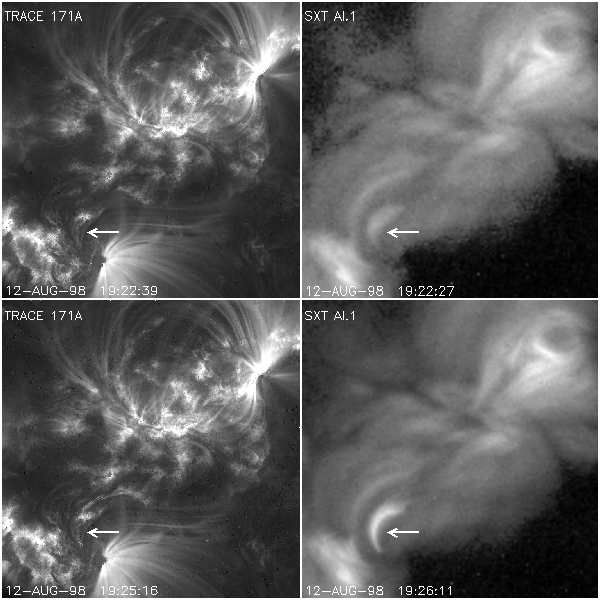
(Week 33, 1998)
The SXT instrument is working well. Solar activity was relatively low with a number of C class flares and three M class flare. This week saw the start of the Whole Sun Fortnight campaign with coverage of the AR8299/8297 complex and a large filament in the south. Details can be obtained from ISAS or GSFC. See the weekly operations report for details. The GOES level has been fairly level as AR8293 passes behind the limb. As usual, the GOES time series for the week is shown below. Click it for enlargement.

In the display above (click to enlarge), the colored lines show the times of SXT images that currently are on-line at ISAS. The purple lines are flare mode. The gaps will be considerably reduced when the NASA telemetry arrives and gets reformatted. For a summary index listing of the weekly science reports, click here.
This week saw the start of the Whole Sun Fortnight campaign; a campaign involving Yohkoh, TRACE and a number of ground-based observatories. This campaign combines two Joint Observing Progams (JOP 81 & 84) to study the magnetic field and coronal morphology of active regions, coronal holes and filaments. More detailed information can be found at the WSF web site.
The first target was an active region complex comprising two active regions (AR8299 and AR8297) in the northern hemisphere. This complex was relatively quiet throughout the observations (exhibiting only 1 small C flare during the two days of the campaign. However, there were a number of interesting loop brightenings, one of which is shown below. The first image shows the early part of a small loop brightening which began with what appears to be a small bright footpoint in the SXT image. The nearest TRACE image is approximately 1 minute prior to the formation of the bright knot at the base of the loop.
Click the figure below.

This loop brightening and bright point in the SXT images occurs on what appears to be a large-scale separatrix surface in the SE quadrant of 8299 . There is a sequence of 110 vector magnetograms from the Mees IVM of this region spanning the same time period (as well as MCCD scans and a Stokes Polarimeter vector magnetogram. The data from SXT, TRACE and Mees will make a nice dataset for those interested in the role of topology and reconnection in such brightenings.
Subsequent development of this small loop saw it brighten in the SXT and TRACE 171 images with an intersting loop appearing in the TRACE sequence.
